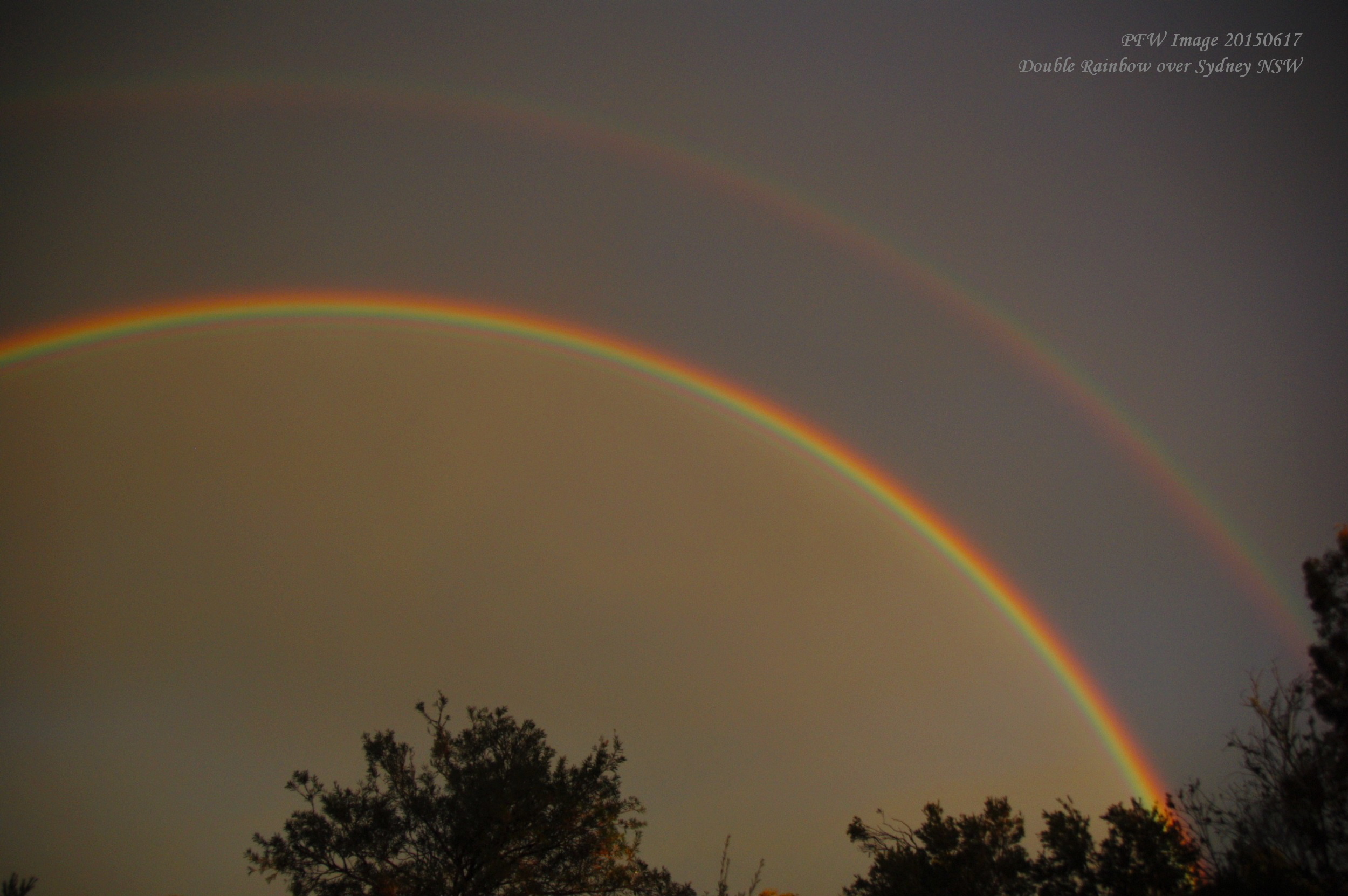On Sunlight and Sky Colours
We all love a clear blue sky. There is something uplifting in a blue sky that raises the human spirit and awakens our senses as we gaze at the vastness of the sky and dream of wonderful things.
But why is the sky blue other colours at different times? Quite simply, the sky is blue because light of shorter wavelengths such as blue are scattered by molecules and fine particulate matter suspended in the Earth’s atmosphere more than the other light of longer red wavelengths.
At various times and conditions we see different colours in the sky, and are a consequence of local circumstances and the time of day. Our sun radiates light in all wavelengths and these combine into what we see as white light. As white light passes through a prism, such as rain droplets, the white light is seen to separate into the individual colours, typically described as red, orange, yellow, green, blue, indigo and violet in decreasing wavelength. We can most often see these colours when the sun is low in the sky, either morning or afternoon, on a rainy day and it shines through a gap in the clouds close to the horizon. The droplets act as a prism and disperse the white light into a beautiful rainbow, a band of colour arcing across the sky.
A rainbow is always seen in the opposite direction to the sun, the arc being part of an incomplete circle of 42 degrees radius centred on the point in the sky directly opposite the sun as seen from the observer’s vantage point. This radius is determined by the physical properties of the raindrop.
The sun does, of course, radiate light of wavelengths much shorter than the blue and also much longer than the red but we cannot see these with our eye. Those higher and lower frequency wavelengths are most often absorbed by our atmosphere, protecting us from a lot of nasty radiation that would otherwise make life not so pleasant here on Earth.
Shown here in Figure 1 is a beautiful double rainbow that was seen over southern Sydney in 2015 where some notable but often overlooked features are clearly visible. A rainbow results from sunlight being reflected off the far side of raindrops then refracted and disbursed as it leaves the droplet. A double rainbow occurs when the sun is much closer to the horizon and is the result of sunlight being reflected twice within a raindrop, the second ray of colour exiting the droplet at a slightly different angle.

The second ray of light produces the second but fainter “inverted” rainbow. Note how the brighter primary rainbow has red on the outer side of the arc and violet on the inner edge. The colour sequence is reversed on the fainter secondary rainbow.
The second obvious feature – perhaps after it has been pointed out – the sky brightness below the primary arc is so much brighter than the sky above the arc, and this is the case for either single or a double rainbow.
This difference in sky brightness is the result of differing amounts of reflected light reaching the observer. More light from angles below the rainbow are reflected towards the observer whereas the light from above the rainbow is more scattered and therefore less of it reaches the observer causing that area of sky to appear darker.
Incidentally, the darker band of sky between a double rainbow is known as Alexander’s Band, after a 3rd century philosopher of Athens in Ancient Greece who was perhaps the first to describe the phenomenon. Given that rainbows are quite common, as are double rainbows, I wonder if he was really the first to look up and say, “Hey, look at that”!
Posted with STEMGeeks
Congratulations @pfwaus! You have completed the following achievement on the Hive blockchain and have been rewarded with new badge(s) :
You can view your badges on your board and compare yourself to others in the Ranking
If you no longer want to receive notifications, reply to this comment with the word
STOPDo not miss the last post from @hivebuzz: